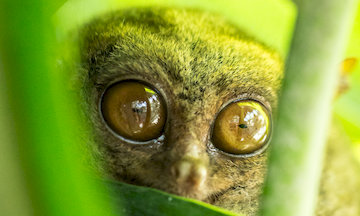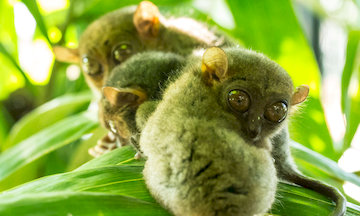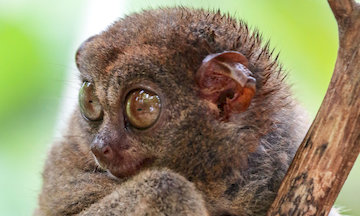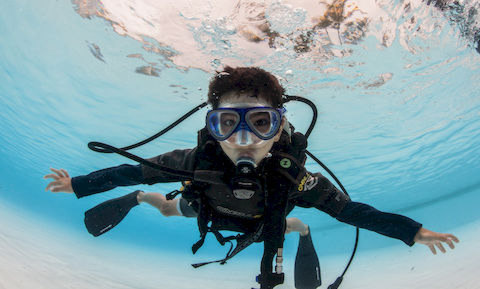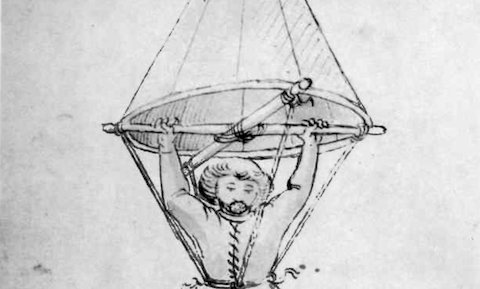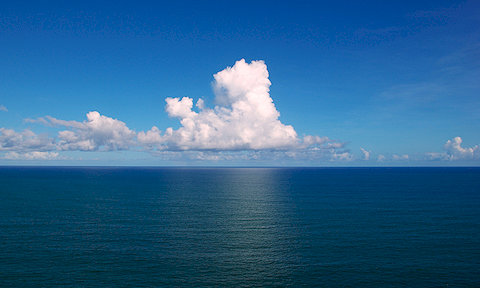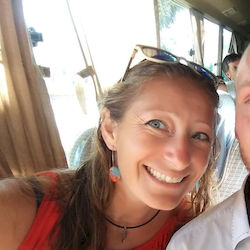The Uniqueness of the Tarsiers
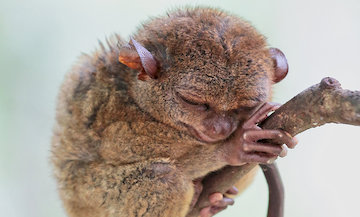 What are tarsiers?
What are tarsiers?
Tarsiers are arguably the world's smallest primates. They are also the earliest primates, evolving from the beginning of a line that led eventually to the evolution of humans. The name "tarsier" comes from the long tarsus bones in their feet, which make their hind legs twice as long as the rest of their bodies.
The Tarsiers' long hind legs allow them to cling vertically to trees and to leap great distances between trees. They have the longest leg-to-body ratio among primates, and their jumping-related genetics have been important to tracing human evolution.
Tarsiers are the only entirely-carnivorous primates. They have other traits that are rare among other primates, such as being antisocial and communicating in high pitches inaudible to other species. They can also swivel their ears, which is why some humans can still do it even though our species has evolved immobile ears.
What makes the Philippine tarsier special?
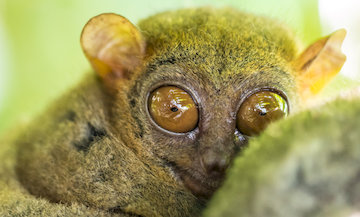 Tarsiers used to live throughout Asia, Europe, North America, and possibly Africa. Today, you can only find them in southeast Asia, specifically Indonesia, Malaysia, and, of course, the Philippines. They were more widespread before they faced competition from more advanced primates.
Tarsiers used to live throughout Asia, Europe, North America, and possibly Africa. Today, you can only find them in southeast Asia, specifically Indonesia, Malaysia, and, of course, the Philippines. They were more widespread before they faced competition from more advanced primates.
Philippine tarsiers are special because they are arguably the world's smallest tarsiers. The world's smallest tarsiers, by definition, are truly the world's smallest primates.
Besides the sun, sand, and beauty of the islands, the chance to observe Philippine tarsiers gives you one more great reason to visit the Philippines!
Why are tarsiers so small?
Tarsiers are small because they evolved 45 million years ago, before other, larger primates. At the time they evolved, all mammals were small. Mammals ranged in sizes as small as modern day mice to as large as modern day, medium-sized dogs. Proto-primates looked similar to squirrels, were about the same size as squirrels, had relatively good eyesight, and climbed trees.
Mammals began to get larger after atmospheric oxygen content doubled around 50 million years ago. The increase in atmospheric oxygen enabled larger, more advanced mammals to deliver more oxygen to their larger brains. Larger brains allowed the rise of the most advanced mammals of all, the primates.
Tarsiers also evolved before they could benefit from the extinction of the massive land animals, especially the largest reptiles. These extinctions decreased competition for space and food, allowing for faster growth among mammals and primates. Gorillas evolved from this line about 8-9 million years ago. Early hominins split from the line of chimpanzees and bonobos about 7 million years ago.
Why are tarsiers' eyes so large?
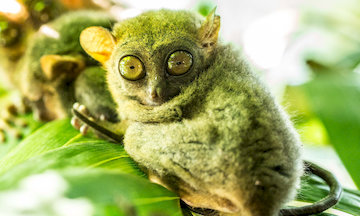 Tarsiers' eyes evolved to be bigger in order to collect more light. This adaptation was necessary because tarsiers are nocturnal, but their eyes did not evolve the light-reflecting retina layer common in other nocturnal vertebrates.
Tarsiers' eyes evolved to be bigger in order to collect more light. This adaptation was necessary because tarsiers are nocturnal, but their eyes did not evolve the light-reflecting retina layer common in other nocturnal vertebrates.
Tarsiers' retinas are mostly rods, indicating poor color vision but improved night vision. Plus, the visual area of their brains is relatively large. Furthermore, the evolution of forward-facing eyes allows stereoscopic vision (3D, like human).
Why can tarsiers turn their heads 360°? Tarsiers can turn their heads almost 360° because they cannot move their eyes. Their eyes are huge compared to their heads, so their eyes evolved to stay in stable, fixed positions while their heads evolved to do all the moving.
Why are tarsier populations declining?
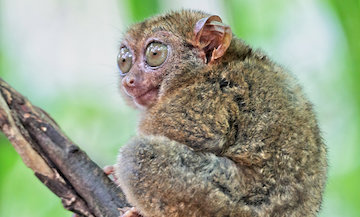 Tarsier populations are declining largely due to humans. Tourism causes stress, and stress leads to early death. Keeping tarsiers as pets is even worse. People want them as pets because they live relatively long lives, but they often commit suicide by banging their heads on their cages.
Tarsier populations are declining largely due to humans. Tourism causes stress, and stress leads to early death. Keeping tarsiers as pets is even worse. People want them as pets because they live relatively long lives, but they often commit suicide by banging their heads on their cages.
Also, tarsiers do not successfully breed in captivity. The primary challenge to breeding tarsiers in captivity is meeting their dietary requirements. Philippines tarsiers sleep and hunt alone, but captivity forces them to be too close together. Also, mating season is determined by the availability of their preferred food: insects.
Another major cause of tarsier population decline is deforestation, which destroys their habitats. Habitat destruction is especially of concern in the Philippines. When you add this factor with the others, you can see why tarsiers are in danger of extinction.
Where can you go to see tarsiers?
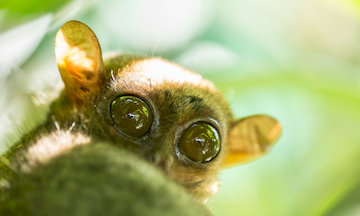 Patrice, the photographer who took all the photographs on this page, recommends visiting the Philippine Tarsier Sanctuary, Address: Tarsier Sunctuary Rd, Corella, Bohol. He has visited all the tarsier sanctuaries in Bohol, and he recommends this one for the best possible experiences for both tarsiers and humans. Other past visitors of this sanctuary agree with his recommendation.
Patrice, the photographer who took all the photographs on this page, recommends visiting the Philippine Tarsier Sanctuary, Address: Tarsier Sunctuary Rd, Corella, Bohol. He has visited all the tarsier sanctuaries in Bohol, and he recommends this one for the best possible experiences for both tarsiers and humans. Other past visitors of this sanctuary agree with his recommendation.
The Philippine Tarsier Sanctuary has rules about no-flash photography, not touching the tarsiers, and being quiet/silent as you walk through the sanctuary. Tarsiers are nocturnal, so it is important to not disturb their sleep when you pass very close to them. As you leave the sanctuary, you will notice that there is only one very small vendor, and they are not pushy. You can shop, if you like, but you can also walk away or visit the educational and interesting Research Center at the end of your tour.
Other sanctuaries are literally tourist traps, so we recommend avoiding them. They are more interested in making money than in protecting the tarsiers. To keep tourists coming back, they allow the bad behaviors that the Philippine Tarsier Foundation prohibits. Also, you can expect the vendors to be very pushy as they chase you to your car trying to sell you souvenirs.
Tarsiers, References, and Articles
Want to learn more about tarsiers?
Below are some of the references we have used for this article.
- 1. Wikipedia Tarsier
- 2. Tree House
- 3. Bohol.ph
- 4. Tarsiers Genome Evolution
- 5. Mike Arkus Tarsiers The World Small...
- 6. News Scientist
- 7. Early Primates
- 8. Wired
Or if you prefer a video, check out on the side or above depending on your device, a reportage from Planet Animal.
Last, but not Least
If you would like to receive interesting content like this in your email Inbox, subscribe to our newsletter.
In addition to our monthly newsletter, we will send you our weekly e-Bulletin with one fascinating topic, like today's article above. There will be no advertising nor sales pitch.
We also want to thank YouTube for the amazing videos on this page, plus Patrice Laborda for the incredible images that we are using on this page and our website.
Thanks for reading, and if you wish, see you next week!
The Research and Media Team at Scotty's.
Few Pictures of the Philippines' Tarsier
